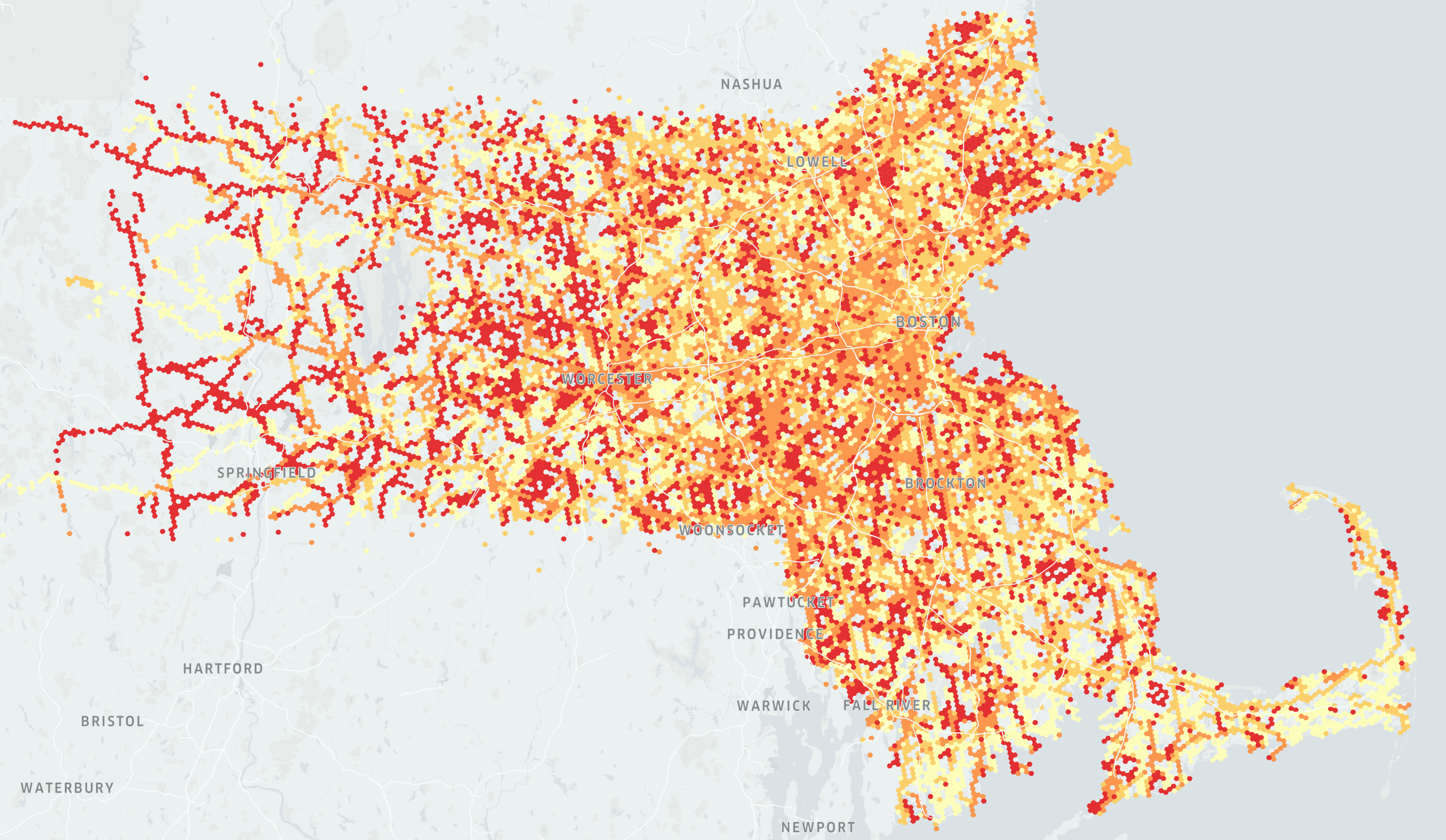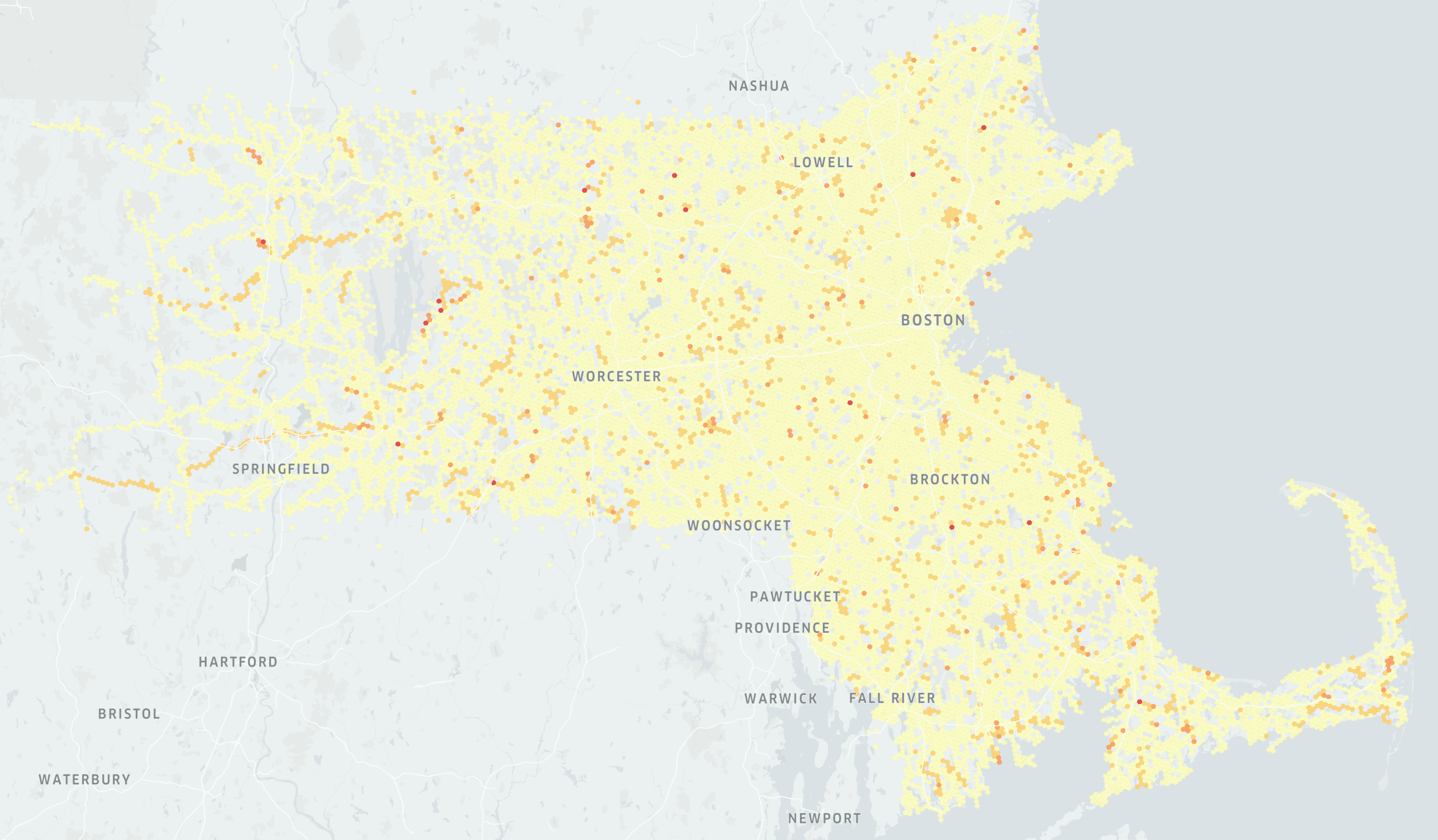Charging Infrastructure
By simulating thousands of cars in an area, INCEPTS can predict charger demand and suggest charger locations to meet that demand. Unlike other approaches, which assume a constant range, INCEPTS directly simulates vehicles producing a richer picture of where chargers are needed.
Boston Case Study
For this analysis, we simulated 1000 vehicles driving to 50 destinations sampled from a gaussian distribution with a standard deviation of 100km centered above Boston. As the cars drive about, we bin their State of Charge (SoC) into regional hexagons, giving an area SoC estimate.

However, the average SoC of cars in a region isn’t that helpful and skews charger placement towards helping the average. We want to place chargers that serve everyone, even when they have a frantic morning and forgot to charge overnight. By fitting a beta distribution to our regional SoC estimates, we can compute the probability of a vehicle having a low SoC in a given region.

By taking a probabilistic approach, we can place charges to ensure a consistent level of service for everyone instead of assuming the average is representative.


